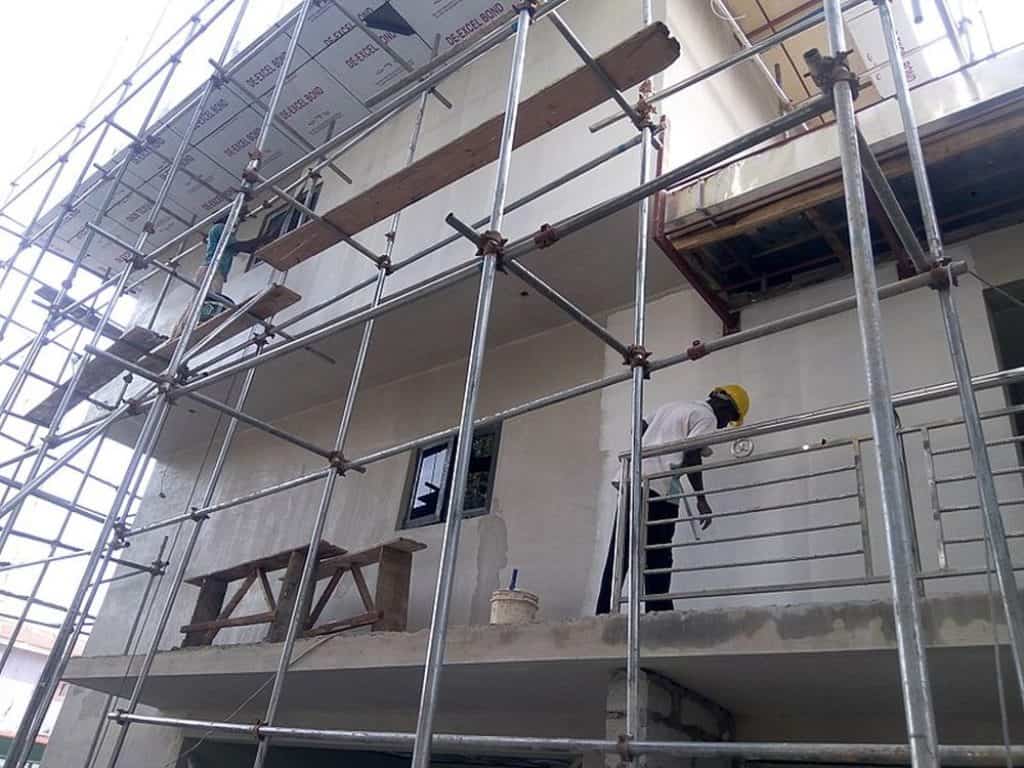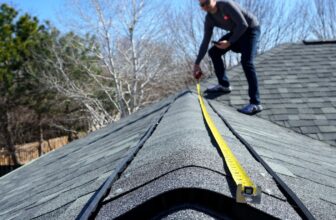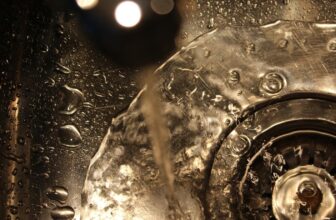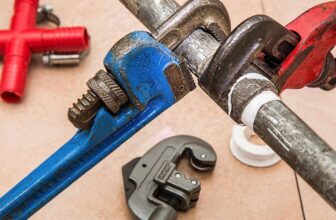Is Primer Supposed To Look Streaky? (Answered In Detail!)
When it comes to painting your walls, applying primer is a crucial step that can make or break your final results.
Primer acts as a base layer for your paint to adhere to, and it can help improve the overall appearance and durability of your finished product.
However, sometimes when you apply primer, it can look streaky and uneven, which can be a cause for concern.
You might be wondering if this streaky appearance is normal or if you’ve done something wrong.
Fortunately, the answer isn’t always straightforward.
The appearance of your primer can depend on several factors, including the type of primer you use, the surface you’re painting, and your application technique.
In this article, I’ll dive deeper into the world of primer and explore whether it’s supposed to look streaky or not.
I’ll also provide some tips and tricks for achieving a smooth, even primer coat, so you can feel confident in your painting skills and create the perfect base for your next painting project.
Table of Contents
Is Primer Supposed To Look Streaky?
Although a primer’s consistency can be controlled by adding solvents, still sometimes, the streaky appearance may show up due to its tackiness and porosity.
If the primer becomes streaky, it can reduce the filling property of paint and increase pores. This problem can cause paint to flake off quickly, thus reducing durability.
A streaky primer is a waste of time, while a good one will reduce your pain costs for years to come.
So, the answer to the question “Is primer supposed to look streaky?” is, no!
The primer should have a uniform coat so that there are no visible lines.
Although the primer is not a necessity for painting, its application is critical. In case of a darker shade of previous paint, one can apply more than two coats.
This will be helpful as the paint will be more adhesive after primer application and the previous paint color will also be hidden easily.
If your primer has cracks and lines, make sure to change the primer or add more coats of it.
Why Does My Primer Look Streaky?
If one observes streakiness, it must mean that the primer is not properly doing its job. So, you must look into this matter and try to find a solution.
The most common reasons for a streaky primer are a cheap product or an old product.
If the consistency or porosity of the primer doesn’t match the surface to be painted, it can cause the primer to look streaky.
Another reason for the streaky appearance of the primer is the improper technique of painting.
Sometimes, one tries to put on the primer himself and in doing so, one may not know how to move the rollers for uniform application of primer.
This can leave some areas with bumps and some areas may not get enough primer.
If the primer is not spread out properly, it can cause paint to be thicker in some areas and cause clumps.
This will cause a bad physical appearance of the paint after drying up.
Streaky primer may also be caused by choosing a color or formula which is not good for the painting surface.
The color may not match the background. The formula of primer may be thicker or thinner than needed.
The taping may also not be proper for primer application. All of these combined make primers look streaky.
How To Fix Streaky Primer?
A streaky primer coat cannot be fixed but some preventions can be done so that the primer application is not uneven.
Don’t hesitate to use a trusted brand of primer which has been reviewed well by the public. Use a roller or brush that is suitable for the surface.
Apply more coats where necessary. For hiding darker paint or stains, use a water-based primer.
This primer will have sufficient and quick coverage and gives long-lasting results. Look for dry patches and give them special attention.
A good latex-based primer is best for household applications if one cannot hire a professional.
How Should Primer Look Before Painting?
Before painting, the primer must have even coverage and no areas left untouched. There shouldn’t be any visible lines or blotches.
The primer is not supposed to be completely transparent.
If some of the previous colors show up, it is fine. Primer just has to stick the to paint so that the older paint color is automatically hidden.
There must be a smooth finish after applying primer. The primer’s consistency must not be too thin or too thick.
A solvent must be added in case of excessive thickness.
How To Apply Primer On The Wall?

Primer is becoming a necessity before applying paint for a durable finish of the paint.
Applying a primer on the wall is not a difficult task, however, it requires a proper technique for even coverage.
Surface Cleaning
Before applying primer, the area which must be painted must have no furniture or obstacles.
The area must be clean and neat with covers on the floor to prevent the paint from splashing and causing stains.
You must have a smooth surface, nails need to be removed, and screw holes must also be properly filled.
Clean the wall with soapy water and let it dry completely. Also, the tape must be used where paint is not required.
Type Of Primer Needed
The next step is the decision on the type of primer needed. There are many types of primer i.e., oil-based, water-based, or latex-based.
Latex-based primers are the best for easy application and prevent scaling of paint.
Oil-based primers are best for woody surfaces while water-based primers are suitable for waterproof paints.
For this, talk to the store staff or professionals and choose suitable color and type of primer to prevent a streaky primer appearance.
Coating And Drying
After this, use a roller or brush to spread out the primer evenly on the surface. Stir the pan and pour some primer on the tray.
Use a roller for large surfaces and brush along the edges. Use rollers on the brush section as well. The layers of primer must not be thick.
Also, the primer must be dried out completely before painting on it.
After coating, check if a second coat is needed and smooth out the surface, afterwards, use sandpaper. This will also remove any extra residue.
Decision Of Primer According To The Surface
For new surfaces, the primer used must have the property of strong adhesion.
For metal surfaces, the surface must be rust-free before applying primer. For the ceiling, the primer must cover all the stains and dry out quickly.
How Many Coats Of Primer Are Needed?
The answer to the question “Is the primer supposed to look streaky?” also lies in the number of coats applied.
Most of the time, the streaky appearance is because of fewer coats than required. One must carefully examine the condition of the surface before applying primer.
For old walls with dark paint or stains, 2 or more coats are needed for proper coverage. For new stainless walls, one coat will be more than enough.
If the first coat doesn’t give the expected appearance or has visible lines, always apply a new coat.
Make sure that your top coat is strong enough to bond the paint with itself.
How Long Does Primer Take To Dry Out?
Usually, before painting, a primer must be given a day to stick to the surface. This will help to make the project look more beautiful and long-lasting.
24 hours are necessary for a primer to settle, otherwise, the paint will peel off, blotch, and degenerate with time.
Even if touching gives a dry appearance, patience is necessary. A minimum time of 24 hours is required for curing a primer.
Which One To Use To Apply Primer: Brush Or Roller?
For many people, the decision to use a brush or roller is confusing.
For many a brush is easy to use as compared to rollers while professionals recommend using rollers for spreading out the primer.
The first factor to be considered while applying primer so that it does not look streaky is to know the kind of paint to be used.
For matte paint, rollers do not work effectively and a brush is required for the smoothness, especially along the edges.
For an eggshell finish, brush strokes do not flatten out the primer, and a roller is needed for smooth coverage.
I would recommend the use of a roller in any case so that the primer does not look streaky.
Brush and roller must be used in correspondence. A brush is essential for edges and rollers for the rest of the surface.
Always use the roller on brush strokes to even out the application.
This double usage prevents the unnecessary drying out of the primer and allows full adhesion for paint.
Conclusion
Priming is an important step while painting anything according to one’s needs. But often after applying primer, one sees visible lines, unevenness, and cracks.
The question “is the primer supposed to be streaky” quickly pops into the mind and confusion is faced.
The answer to this question is: No. It is necessary to use quality primer and a combination of roller and brush to give a uniform layer of primer to the surface.
Proper drying out of primer is essential. A streaky appearance means fewer coats, so it is wise to always give a second coat of primer to the surface.
All the necessary steps and guidelines for primer application must be followed.
A good primer application means good painting and this leads to a project fulfilling one’s expectations.




